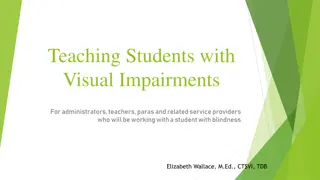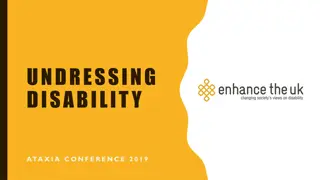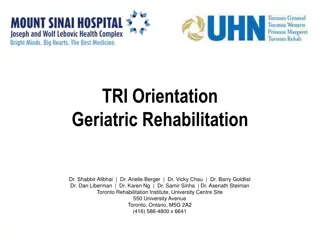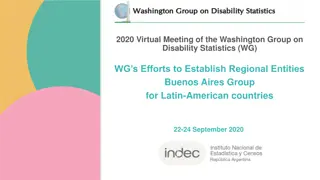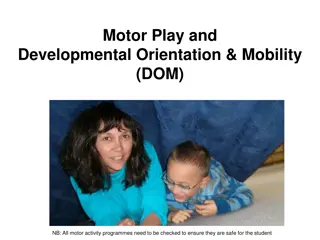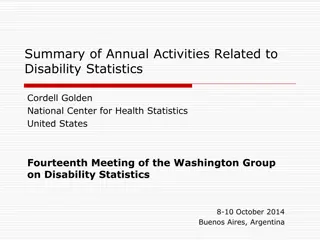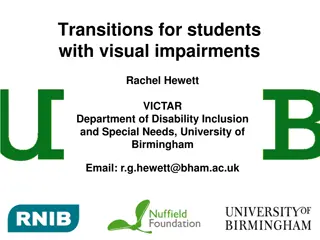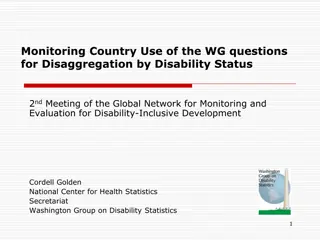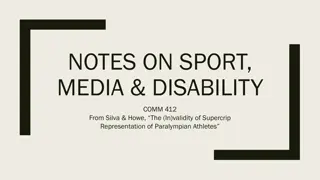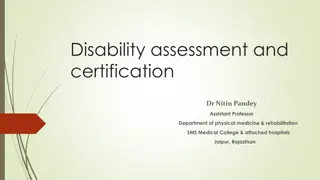Understanding Disability: Impairments, Activity Limitations, and Participation Restrictions
Disability is a condition that affects the body or mind, resulting in difficulty in performing activities and interacting with the environment. There are various types of disabilities, each impacting individuals differently. The term "people with disabilities" encompasses a diverse group with varying needs. Disability, as defined by the World Health Organization, consists of impairment, activity limitation, and participation restrictions. Sources of disability can range from genetic disorders to environmental exposures during pregnancy.
Download Presentation

Please find below an Image/Link to download the presentation.
The content on the website is provided AS IS for your information and personal use only. It may not be sold, licensed, or shared on other websites without obtaining consent from the author. Download presentation by click this link. If you encounter any issues during the download, it is possible that the publisher has removed the file from their server.
E N D
Presentation Transcript
Disability and Health Overview Impairments, Activity Limitations, and Participation Restrictions
What is disability? A disability is any condition of the body or mind (impairment) that makes it more difficult for the person with the condition to do certain activities (activity limitation) and interact with the world around them (participation restrictions).
Types of Disabilities: There are many types of disabilities, such as those that affect a person s: Vision Learning Movement Communicating Thinking Hearing Remembering Social relationships Mental health
Linguistically speaking, does the term people with disability refer to a single and specific population? Although people with disabilities sometimes refers to a single population, this is actually a diverse group of people with a wide range of needs. Two people with the same type of disability can be affected in very different ways. Some disabilities may be hidden or not easy to see.
According to the World Health Organization, disability has three dimensions: Impairmentin a person s body structure or function, or mental functioning; examples of impairments include loss of a limb, loss of vision or memory loss. Activity limitation, such as difficulty seeing, hearing, walking, or problem solving. Participation restrictionsin normal daily activities, such as working, engaging in social and recreational (entertaining) activities, and obtaining health care and preventive services.
What are the sources of disability? How can people become disabled?
Disability can be: Related to conditions that are present at birth and may affect functions later in life, including cognition (memory, learning, and understanding), mobility (moving around in the environment), vision, hearing, behaviour, and other areas. These conditions may be o Disorders in singlegenes(for example,Duchenne muscular dystrophy); o Disorders ofchromosomes(for example,Down syndrome); and o The result of the mother s exposure during pregnancy to infections (for example, rubella) or substances, such as alcohol or cigarettes.
Associated with developmental conditions that become apparent during childhood (for example,autism spectrum disorder andattention- deficit/hyperactivity disorder or ADHD) Related to an injury (for example,traumatic brain injuryorspinal cord injury ). Associated with a longstanding condition (for example,diabetes), which can cause a disability such as vision loss, nerve damage, or limb loss. Progressive(for example,muscular dystrophy),static(for example, limb loss), orintermittent(for example, some forms ofmultiple sclerosis ).
What is impairment? Impairmentis an absence of or significant difference in a person s body structure or function or mental functioning. Examples: problems in the structure of the brain can result in difficulty with mental functions problems with the structure of the eyes or ears can result in difficulty with the functions of vision or hearing.
Types of Impairments Structural impairmentsare significant problems with an internal or external component of the body. Examples of these include a type of nerve damage that can result inmultiple sclerosis , or a complete loss of a body component, as when a limb has been amputated. Functional impairmentsinclude the complete or partial loss of function of a body part. Examples of these include pain that doesn t go away or joints that no longer move easily.
What is the difference between activity limitation and participation restriction? The World Health Organization (WHO) published the International Classification of Functioning, Disability and Health (ICF) in 2001. The ICF provides a standard language for classifying body function and structure, activity, participation levels, and conditions in the world around us that influence health.
Why is there a need for such a classification? This description helps to assess the health, functioning, activities, and factors in the environment that either help or create barriers for people to fully participate in society.
According to the ICF: Activityis the execution of a task or action by an individual. Participationis a person s involvement in a life situation.
The ICF acknowledges that the distinction between these two categories is somewhat unclear and combines them, although basically, activities take place at a personal level and participation involves engagement in life roles, such as employment, education, or relationships. Activity limitations and participation restrictions have to do with difficulties an individual experiences in performing tasks and engaging in social roles. Activities and participation can be made easier or more difficult as a result of environmental factors, such as technology, support and relationships, services, policies, or the beliefs of others.
The ICF includes the following in the categories of activities and participation: Learning and applying knowledge Managing tasks and demands Mobility (moving and maintaining body positions, handling and moving objects, moving around in the environment, moving around using transportation) Managing self-care tasks Managing domestic life Establishing and managing interpersonal relationships and interactions Engaging in major life areas (education, employment, managing money or finances) Engaging in community, social, and civic life
A final note It is very important to improve the conditions in communities by providing accommodations that decrease or eliminate activity limitations and participation restrictions for people with disabilities, so they can participate in the roles and activities of everyday life.
References 1. World Health Organization, International Classification of Functioning, Disability and Health (ICF) . Geneva: 2001, WHO. 2. US Department of Health and Human Services. The Surgeon General s Call to Action to Improve the Health and Wellness of Persons with Disabilities. Washington, DC: US Department of Health and Human Services, Office of the Surgeon General; 2005.







